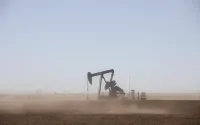At 6 a.m. ET, the Category 4 hurricane was centered about 35 miles south-southeast of Grand Isle, Louisiana and about 85 miles south-southeast of New Orleans, the National Hurricane Center said.
The storm's northern eyewall began to move onshore about a half-hour later. A storm is not considered to have made landfall until the eye's center is over land.
Although New Orleans was braced for a direct hit, experts suggested Monday that that coastal Mississippi may bear the brunt of the storm, although New Orleans would certainly be affected.
Hurricane-force winds were being felt early Monday in some parts of the state, the National Hurricane Center said. Grand Isle reported sustained winds of 87 mph with gusts near 114 mph. A gust of 85 mph was reported in New Orleans.
At 5 a.m., the storm was moving to the north at about 15 mph with maximum sustained winds of 150 mph. (Watch video to see the worst case scenario)
New Orleans Mayor Ray Nagin declared a state of emergency Sunday and ordered a mandatory evacuation of the city. (Watch video of mayor's announcement)
Nagin estimated that nearly 1 million people had fled the city and its surrounding parishes by Sunday night. (Watch time lapse video of the evacuation)
About 1.3 million people live in New Orleans and its suburbs. (Watch video to see who's staying and who's leaving)
Between 20,000 and 25,000 others who remained in the city took shelter in the Louisiana Superdome, lining up for what authorities warned would be an unpleasant day and a half at minimum.
City officials told stranded tourists to stay on third-floor levels or higher and away from windows.(See video from New Orleans, a city below sea level)
Louisiana Gov. Kathleen Blanco said that New Orleans could expect a complete loss of electricity and water services as well as intense flooding.
"We know we're going to have property damage," she told CNN's "Larry King Live." "We know we're going to have high wind damage. We're hoping we're not going to lose a lot of lives."
About 70 percent of New Orleans is below sea level and is protected from the Mississippi River by a series of levees. (Full story)
Forecasters predicted the storm surge could reach 28 feet; the highest levees around New Orleans are 18 feet high.
Hurricane-force winds extend 105 miles from the center of the mammoth storm and tropical storm-force winds extend outward up to 230 miles. It is the most powerful storm to menace the central Gulf Coast in decades.
Hurricane warnings are posted from Morgan City, Louisiana, eastward to the Alabama-Florida state line, including New Orleans and Lake Pontchartrain. This means winds of at least 74 mph are expected in the warning area within the next 24 hours.
A tropical storm warning and a hurricane watch are in effect from the Alabama-Florida state line eastward to Destin, Florida, and from west of Morgan City to Intracoastal City, Louisiana. A tropical storm warning is also in effect from Intracoastal City, Louisiana, west to Cameron, Louisiana, and from Destin, Florida, eastward to Indian Pass, Florida.
A tropical storm warning means tropical storm conditions, including winds of at least 39 mph, are expected within 24 hours. A hurricane watch means hurricane conditions are possible, usually within 36 hours.
Isolated tornadoes are also possible Monday across southern portions of Louisiana, Mississippi, Alabama and the Florida Panhandle, forecasters said.
Federal Emergency Management Agency teams and other emergency teams were in place to move in as soon as the storm was over, FEMA Undersecretary Michael Brown said.
National Hurricane Center Director Max Mayfield said: "There's certainly a chance it can weaken a bit before it gets to the coast, but unfortunately this is so large and so powerful that it's a little bit like the difference between being run over by an 18-wheeler or a freight train. Neither prospect is good." (Watch Mayfield's assessment of Katrina)
Three deaths in New Orleans
Three residents of a New Orleans nursing home died Sunday while being evacuated to Baton Rouge, said Don Moreau, chief of operations for the East Baton Rouge Parish Coroner's Office.
The 23 residents were supposed to stay at a church, where one of the bodies was found. The other body was found on a school bus and a third person died at a hospital, Moreau said.
The others were found to be suffering from various forms of dehydration and exhaustion, he said.
Moreau did not know whether authorities would term the deaths storm-related. "These people are very fragile," he said. "When they're loaded up on a school bus and transported out of New Orleans ..."
One person died in similar circumstances during evacuations from Hurricane Ivan, he said.
Katrina is blamed for at least seven deaths in Florida, where it made landfall Thursday as a Category 1 hurricane. As much as 18 inches of rain fell in some areas, flooding streets and homes. (See video of the damage floodwaters left in one family's new house)
Category 5 is the most intense on the Saffir-Simpson scale. Only three Category 5 hurricanes have made landfall in the United States since records were kept. Those were the Labor Day hurricane of 1935, 1969's Hurricane Camille and Hurricane Andrew, which devastated the Miami area in 1992. Andrew remains the costliest U.S. hurricane on record, with $26.5 billion in losses.
Camille came ashore in Mississippi and killed 256 people.
CNN's John Zarrella contributed to this report.






